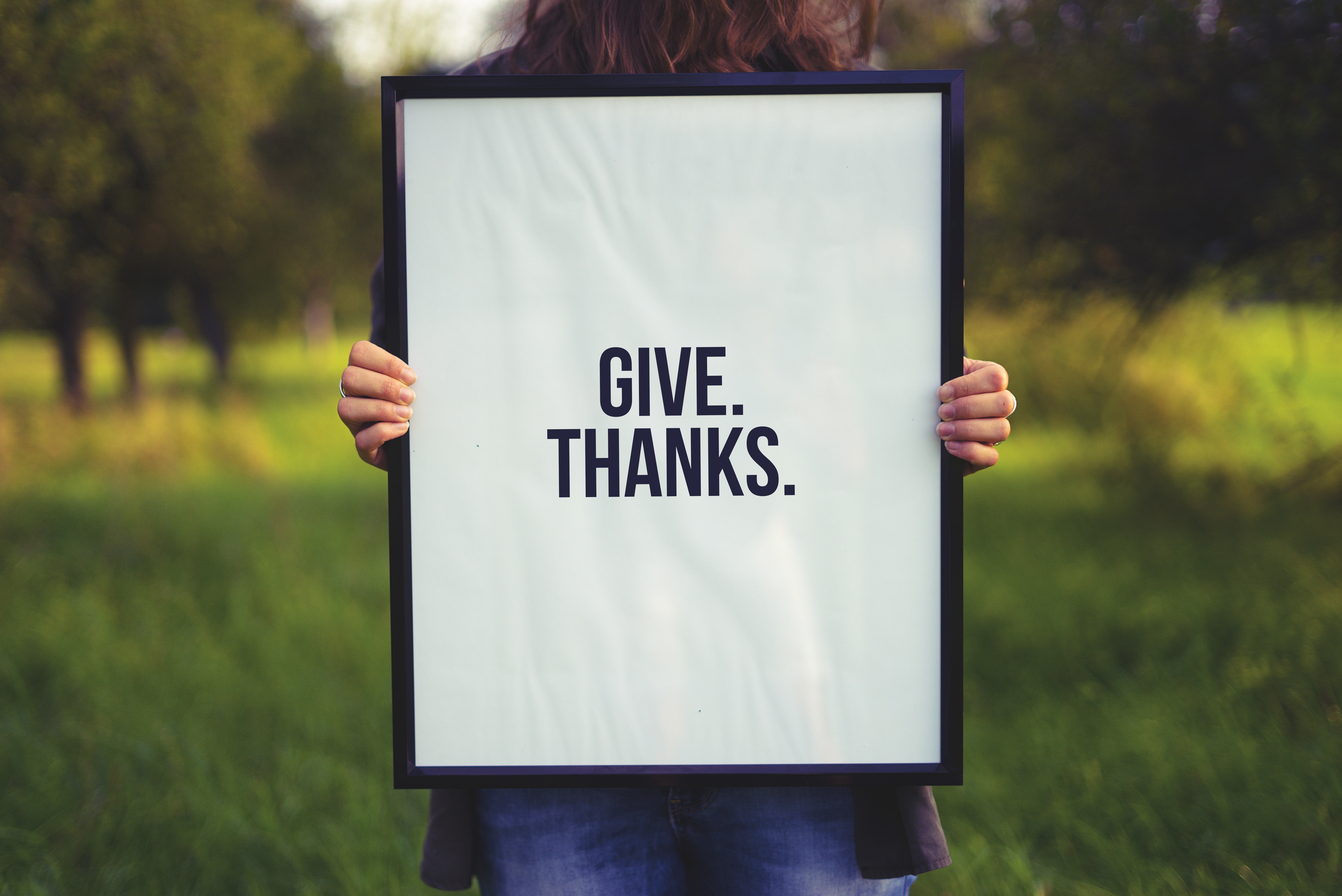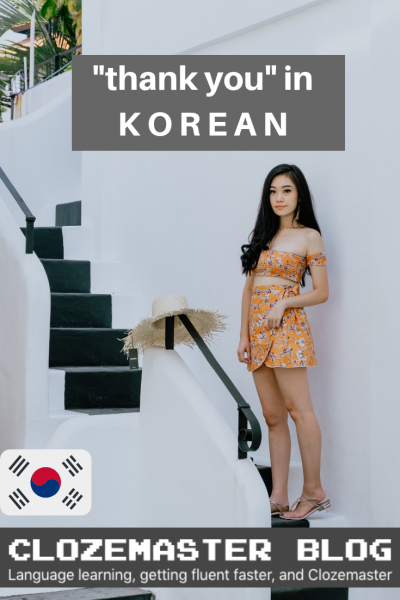
‘Thank you’ is one those phrases that makes both the speaker and listener happy. Saying ‘thank you’ to express our gratitude makes us feel happy that we’ve recognized someone’s good deeds, and likewise, being appreciated for your help makes the person being thanked happy. ‘Thank you’ in Korean serves the same purpose, and similar to English, there is more than one way of saying ‘thank you’ in Korean, so let’s find out.
In this article, we’ll explore three levels of formality when saying thank you in Korea. Then, we’ll help you learn a few useful phrases you can use in response to someone saying “thank you” in Korean.
Two formal ways of saying ‘thank you’ in Korean
There are two standard ways of saying thank you in Korean.
Both mean the same, and they’re both very commonly used.
When to use it
We use these expressions when expressing our gratitude to people we aren’t familiar with, or with people who are older and/or are senior in rank in an organization. So if you want to say ‘thank you’ in Korean to a stranger, to your grandparents, or to the CEO of your workplace, you can say 감사합니다 or 고맙습니다.
Although both mean the same and are commonly used in Korea, people often say that 감사합니다 is more formal than 고맙습니다, so it is a little more common to say 감사합니다 than 고맙습니다 when you want to say ‘thank you’ in a formal situation.
An even more formal ‘thank you’ (though rarely used)
Now although an average Korean learner is unlikely to say this, there is actually an even more formal way of saying ‘thank you’ in Korean:
- 대단히 감사합니다 (de-dan-hi gam-sa-ham-ni-da).
The meaning
대단히 means ‘very much’, ‘greatly’, and ‘extremely’, and when this word combines with thank you 감사합니다 and becomes 대단히 감사합니다, it means ‘thank you very much’ or ‘I’m really grateful to you’. 대단히 is commonly used with 감사합니다, but it’s rarely used with 고맙습니다.
When to use it
Okay, so when do people say 대단히 감사합니다? In what kind of situation would people say this extremely formal version of thank you in Korean?
Now, imagine that you’re a real estate agent, and you’re hosting an open house. Not many people have showed up, but all of a sudden, in comes your first customer. To say ‘thank you very much for coming’ in Korean, you could say ‘와 주셔서 대단히 감사합니다.’ (wa-ju-syu-seo gam-sa-ham-ni-da). 와 주셔셔 means ‘for coming’, or ‘because you came’, so the whole phrase means ‘thank you very much for coming’.
Polite way of saying ‘thank you’ in Korean
Although there are two formal ways of saying ‘thank you’ in Korean, only one of those can be conjugated into a polite form of ‘thank you’.
We can change 고맙습니다 to…
- 고마워요 (go-ma-wo-yo).
When to use it
This is a polite way of saying thank you in Korean. However, ‘고마워요’ has limited uses. It’s too formal to use with friends, and it’s not formal and polite enough to use with people who you’ve just met, people who are older than you, or people who are senior in rank than you in an organization.
So when can we use 고마워요? 고마워요 is commonly used with colleagues who you are familiar with, or are of the same level as you in a work environment because it’s important to be polite and maintain a level of respect at work. You can also use 고마워요 with people whom you’ve met a few times and are of the same age, and you may also use 고마워요 to people who are younger than you because you want to be polite.
Casual ‘thank you’ in Korean
When speaking Korean, it’s important to know when to use the formal language and the polite language. However, it’s just as important to know when to use the casual language. Like the polite form of thank you in Korean, we can conjugate 고맙습니다 to make the casual form of ‘thank you’ in Korean, and it’s…
- 고마워 (go-ma-wo).
When to use it
고마워 is casual and informal, and it means ‘thanks’. This casual form of Korean is often called ‘반말‘ (ban-mal).
반말 is a form of language that’s only used with people who you are close to, such as friends or your siblings, and using 반말 can come across very impolite when used with people you shouldn’t be using it with. 고마워 is also used with people who are younger than you but only if you are familiar with them or the person who’s younger than you is a child. 고마워 is never used between two adults who aren’t familiar with each other, even if there is a big age gap between the two people. This is because, as mentioned already, it can come across very rude and it’s important to be respectful when speaking to people in Korea.
Modifying ‘thank you’ in Korean
We’ve already learned to modify 감사합니다 with 대단히, but 대단히 is very formal, and it’s only used to modify the formal thank you 감사합니다 – and quite frankly, an average Korean learner is unlikely to use this word.
However, we can also modify the polite form 고마워요, the casual form 고마워, and the formal 감사합니다 and 고맙습니다 with the words 정말 (jung-mal) which means ‘really’. So we can say:
- (Formal) 정말 감사합니다/고맙습니다 – really thank you,
- (Polite) 정말 고마워요 – really thank you,
- (Casual) 정말 고마워 – really thanks.
Additionally, we can use modifiers ‘진짜‘ (jin-Jja) which also means ‘really’:
- (Formal) 진짜 감사합니다/고맙습니다 – really thank you,
- (Polite) 진짜 고마워요 – really thank you,
- (Casual) 진짜 고마워 – really thanks.
And ‘너무‘ (neo-mu), meaning ‘too’:
- (Formal) 너무 감사합니다/고맙습니다 – thank you so much,
- (Polite) 너무 고마워요 – thank you so much,
- (Casual) 너무 고마워 – thank you so much.
Although the English ‘too’ is often used to express something negative, as in ‘too expensive’ or ‘too hot’, this use of ‘너무’ in Korean is used to express that someone feels grateful very much.
Now, so far we’ve learned the two forms of thank you in Korean 감사합니다 and 고맙습니다, the three different levels of formality and how we can conjugate 고맙습니다, and the modifiers we can use with ‘thank you’ in Korean. Let’s now look at how we can respond to someone saying ‘thank you’.
‘You’re welcome’ in Korean
If you type, ‘you’re welcome’ in a dictionary, you will learn that the Korean version of ‘you’re welcome’ is…
- 천만에요 (chun-man-ae-yo).
천만에요 is a VERY formal way of responding to someone saying thank you, and unless you’re in an incredibly formal setting, you’re unlikely to use this phrase – even Koreans rarely use this phrase.
A more common, yet still formal way of responding to someone saying ‘thank you’ is…
- 별말씀을요 (byul-mal-sseum-eul-yo).
‘별말씀을요’ means ‘don’t mention it’. This phrase is formal and more commonly used than 천만에요.
Finally, the most commonly used response to ‘thank you’, which is less form, but a polite response, is…
- 아니에요 (a-ni-ae-yo).
‘아니에요’ means ‘not at all’, and of all the three phrases, this is the most commonly used expression when responding to ‘thank you in Korean’, mainly because it can be used in less formal settings.
So the three responses to thank you are:
- (Formal) 천만에요 – you’re welcome,
- {Formal} 별말씀을요 – don’t mention it,
- (Polite) 아니에요 – not at all.
Great, before we end this article on ways to say ‘thank you’ in Korean, here’s a bonus expression. When someone offers something, and we want to say ‘no’, in English it’s common to say ‘no thank you’. So how do we say this in Korean?
‘No, thank you’ in Korean
In Korean, there are two common ways to say ‘no thank you’ and one of them we’ve learned already.
The first way to say ‘no thank you’ is…
- 아니에요 (a-ni-ae-yo).
아니에요, which we can use in response to someone saying ‘thank you’, can also be used to say ‘no, thank you’. 아니에요 is the polite form, and we can conjugate it to a more formal form ‘아닙니다’ (a-nim-ni-da).
The second way of saying ‘no thank you’ in Korean is…
- 괜찮아요 (gwen-chan-ah-yo).
괜찮아요 means ‘that’s okay’. This expression can also be conjugated to 괜찮습니다 (gwen-chan-seum-ni-da) to become a more formal form.
The two forms of ‘no, thank you’ are commonly used, and you can use the formal and less formal forms, depending on who you’re speaking to.
Wrap up!
So in Korean, there are four levels of formality when saying thank you in Korean.
- Formal thank you: 감사합니다, 고맙습니다.
- Polite thank you: 고마워요
- Casual thank you: 고마워
It’s very important that you know which one to use with whom, as it can save you from a potential embarrassment for yourself, and from offending someone unintentionally.
We also learned a super formal way of saying ‘thank you’ in Korean – 대단히 감사합니다.
Then, we learned three ㅡ modifiers we can use to emphasize how thankful we are. And lastly, we learned three ways of saying ‘you’re welcome’ and two ways of saying ‘no, thank you’ in Korean as well.
Remember, practice is everything when learning a language – so don’t forget to practice Korean daily with the Clozemaster app! 감사합니다 for reading this article!
Learn Korean in context with ClozemasterClozemaster has been designed to help you learn the language in context by filling in the gaps in authentic sentences. With features such as Grammar Challenges, Cloze-Listening, and Cloze-Reading, the app will let you emphasize all the competencies necessary to become fluent in Korean. Take your Korean to the next level. Click here to start practicing with real Korean sentences! |



Thanks.
Thank you so much. I appreciate it so much! 감사합니다-gamsahamnida so much!
감사합니다 !!!
Gomayo
Thank you very much .
너무 감사합니다 . I just started to learn Hangul Language and I come a cross a typo for that I wanted to cross check , so I found this page on Google. Well I get a lot more knowledge here.
It really helped me … And I’m following you right now 😂😊.
Wish you best for your endeavours. Fighting!! 💪👍
감사합니다!
So helpful ^^